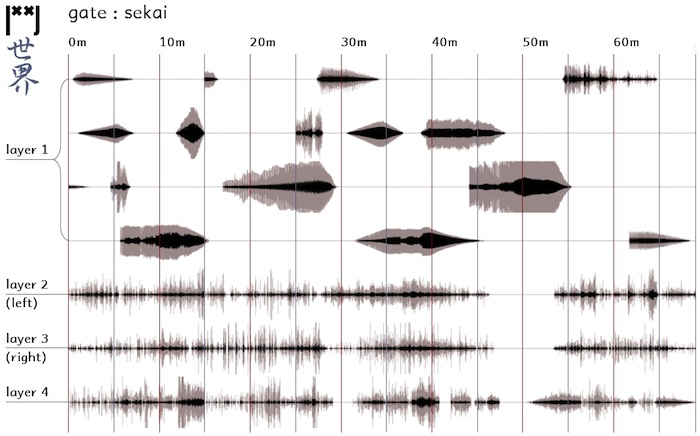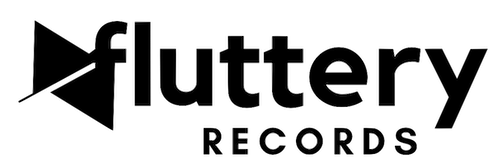
Gate is an experiment in improvised music by Lajos Ishibashi-Brons, a Dutch philosopher and musician living in Japan. The name of the project, ‘Gate’, summarizes its intended nature: a gate is in between, in between inside and outside, between here and there, between now and then; and a gate is a passageway, both an entrance and an exit, and a point where paths cross. The symbol |˟˟| is a simplification of the ‘broken gate radical’ 鬥, which (on its own) is a Chinese character meaning ‘struggle’, representing another core theme of the project: dissonance, discomfort, distress.
We have asked Lajos his thoughts about his new album on Fluttery Records:
“Bury your romantic proclivities for harmony, for order, for purpose. All of that is illusion, paint. Look at the world, listen. There is beauty in discord, dissonance, disorder, destruction, decay, corruption, contrast, arbitrariness. Life is discord, life is destruction, randomness, change. Look at the world, look at the power- lines, open-pit mines, rivers and lakes, factories and power plants, mountains and roads, buildings and forests, trash dumps and oceans. Look at them clash, interpenetrate, infest, defile. Look at the transformation of landscapes. Look at the haphazard collections of streets and buildings, and at the people living in them. Look at the dirt, the mess, the disharmony. Just look: it’s beautiful. And listen. Open your eyes and ears. Listen to the sounds of the world, to the crashing, grinding, and banging. Embrace the dissonance, the discomfort, the randomness. Those are our sounds, our world. Listen. And travel in sound.”
The new album by Gate, “Sekai” (世界, ‘world’), is a mix of four layers of solo improvisation on multiple instruments, one of those layers being a mix itself. The four layers resulted from four recording sessions. The first and longest of these was focused on creating loops, drones, and background noise. Selected material from this session was arranged on the four audio tracks that together form layer 1. Layers 2 to 4 were added one after the other by means of improvisation while listening to the previously recorded layers. These sessions were exactly as long as the finished recording (i.e. 69 minutes and 2 seconds), and no edits or changes to the session recordings were made other than volume adjustments (and a bit of reverb in case of layers 2 and 3). For layers 2 and 3, only acoustic instruments were used (and thus no effects or other electronics). Session 4 made use of electric instruments and a number of effects.
Instruments used include Bassanxi, a four-string instrument (tuned like a bass) combining design elements from both the guzheng (古箏) and huqin (胡琴) families of instruments; Chaĭlaazkhuur, a tea can with a neck, fingerboard, and one string; Hichiriki (篳篥), a traditional Japanese double reed instrument used mainly in Gagaku (雅楽), Japanese classical music; Sousen, an electric string instrument used for sound effects and noises; and Zarazara, a small box with short pieces of bass B-string attached on one end for creating crackling and other noises. Except Hichiriki, all of these instruments were designed and built especially for this project.
“Sekai” comes in two editions. The Orginal (White) Edition is the original 69 minutes, four-layered session, as it was created and as it was and is intended to be heared. The Black Edition is a remix, cutting up the original in 5 parts each between 12 and 17 minutes. The Black Edition is only available as a download.
Listen to new Gate album: Sekai
